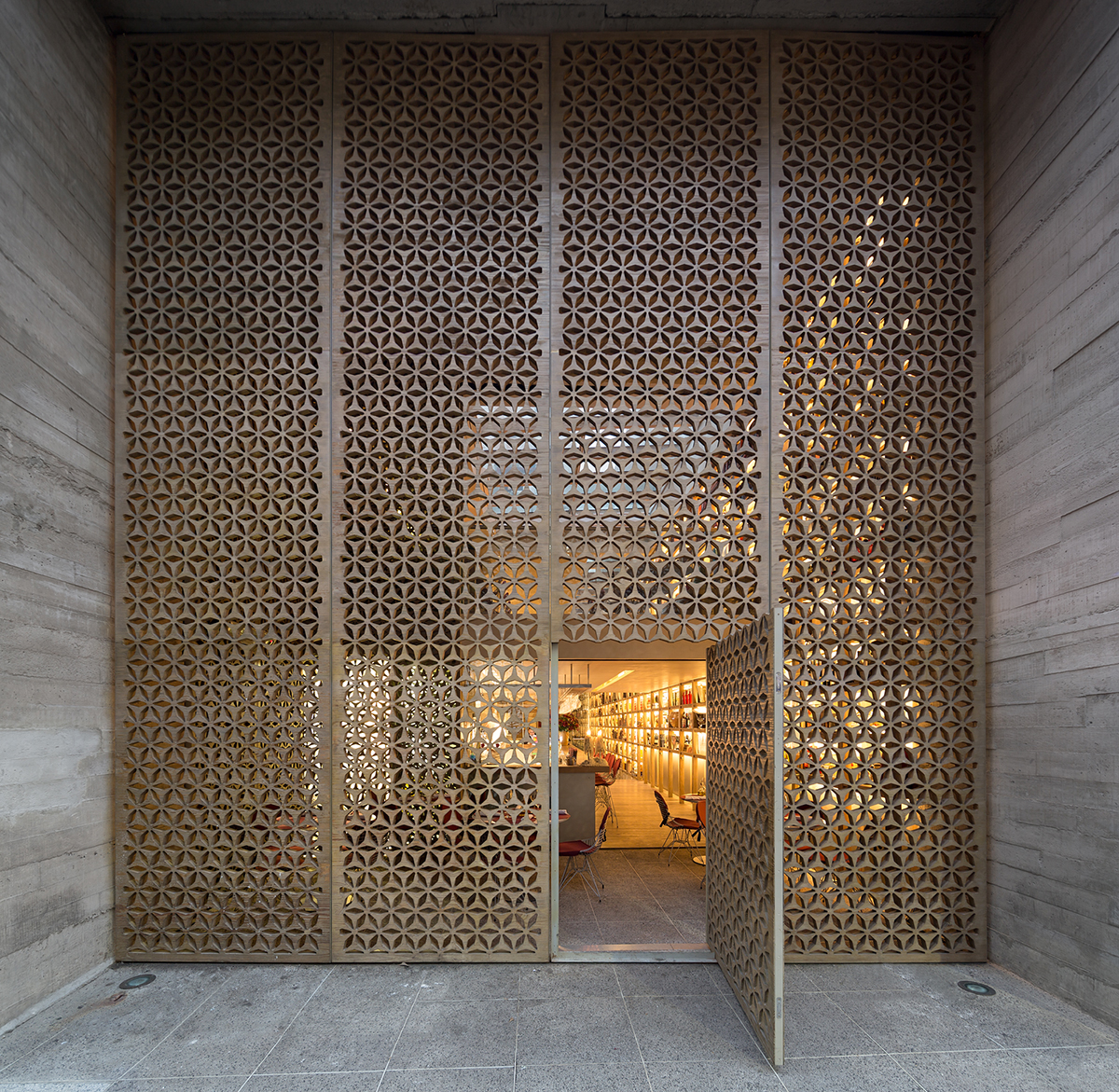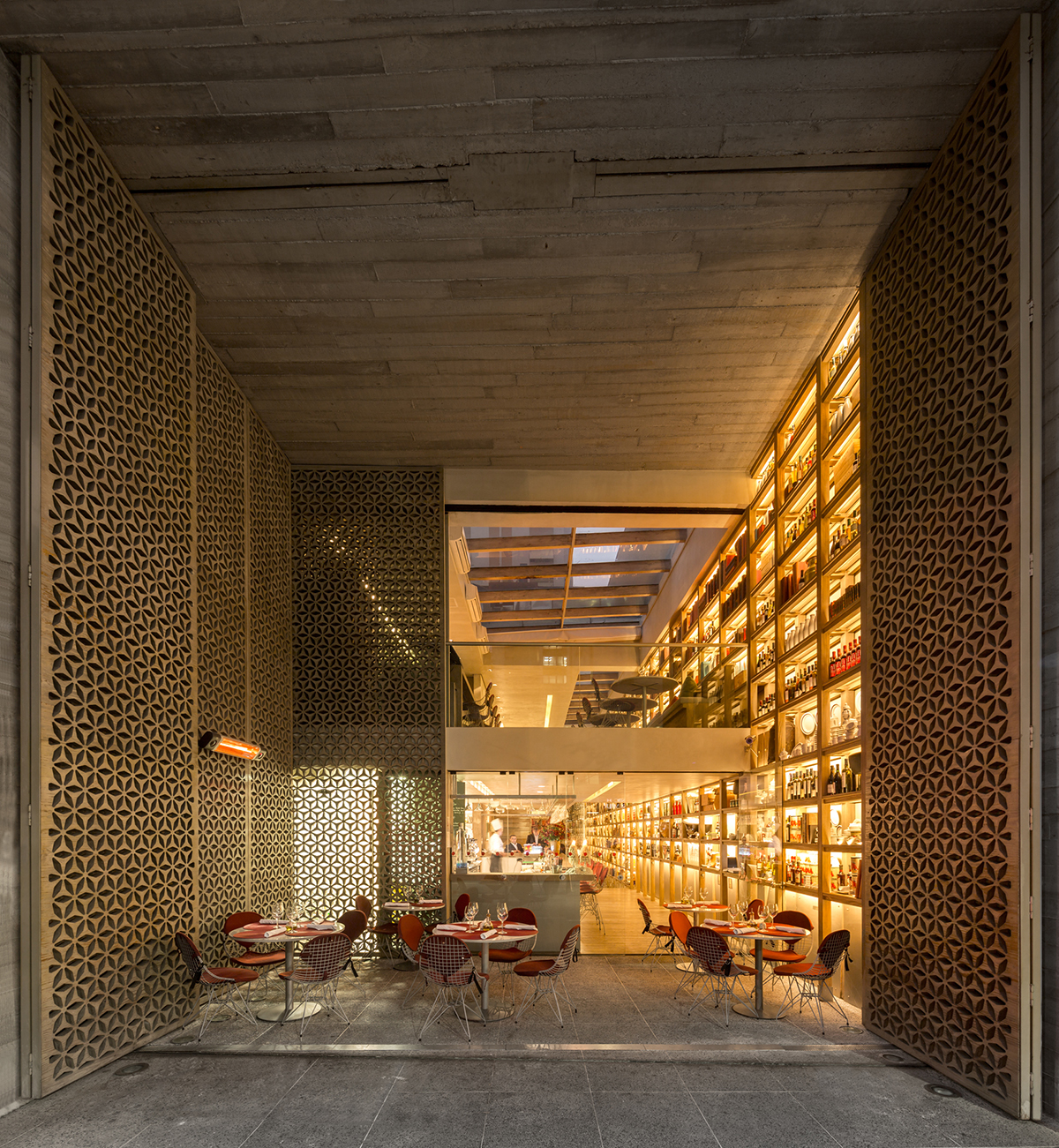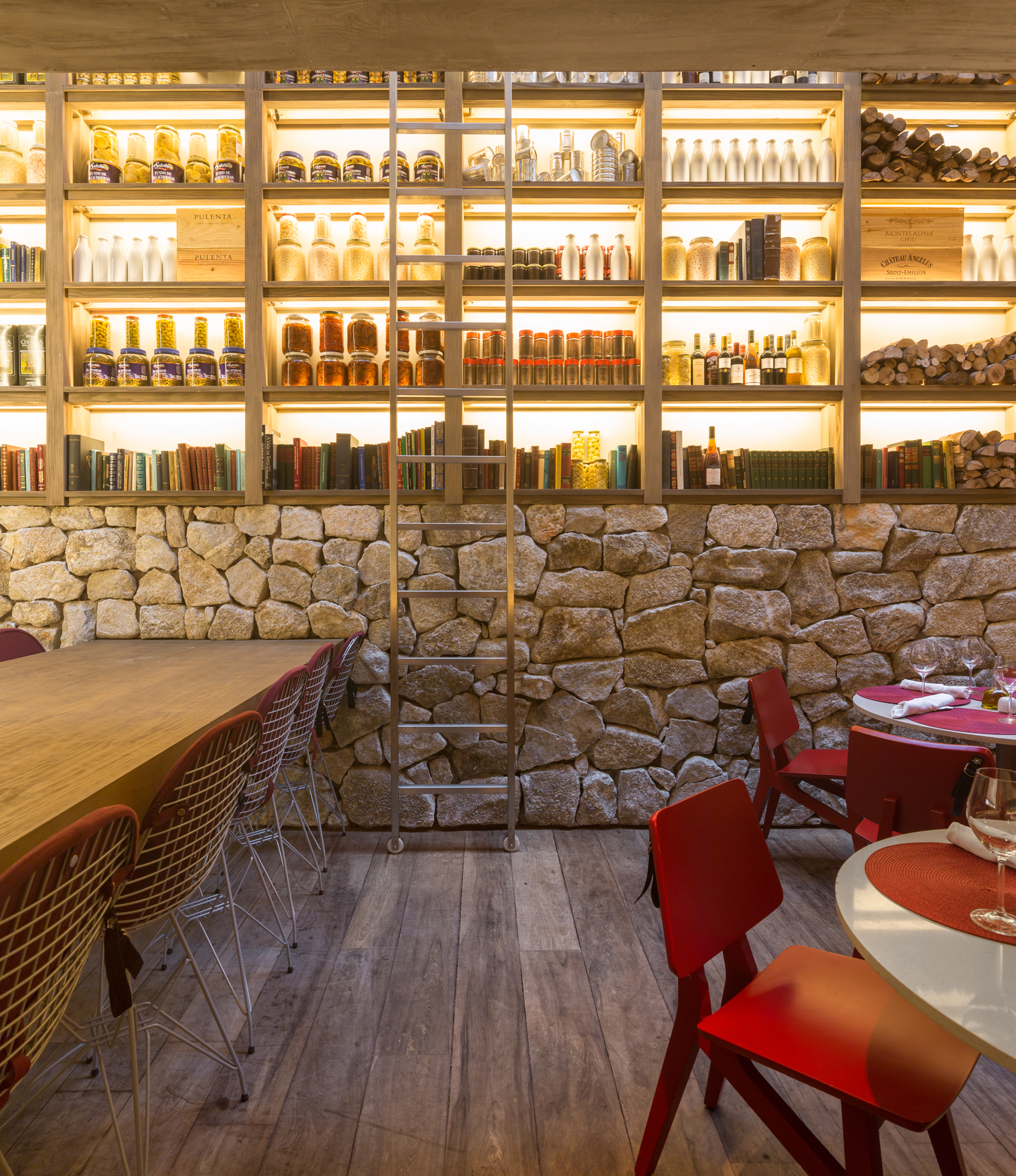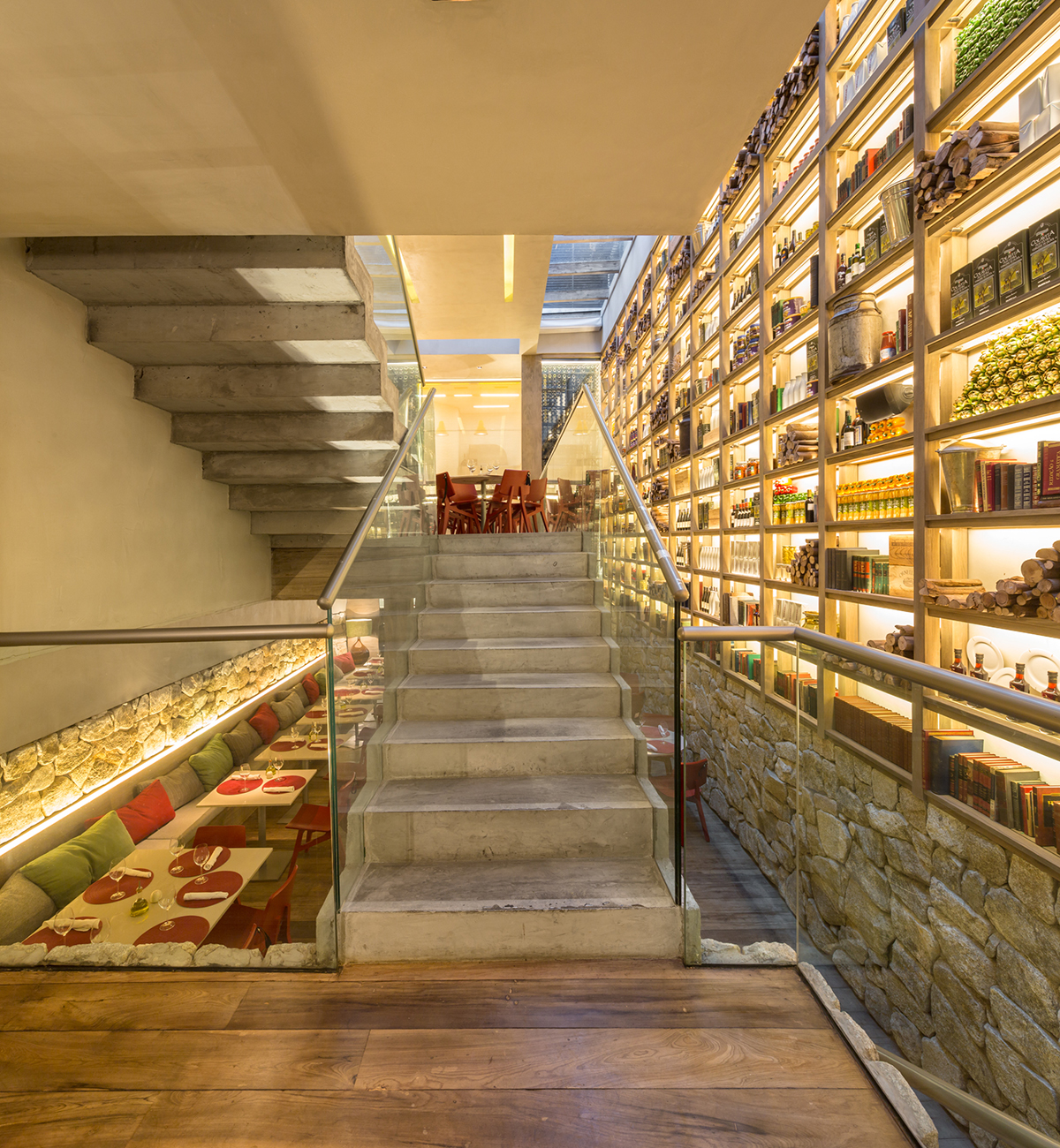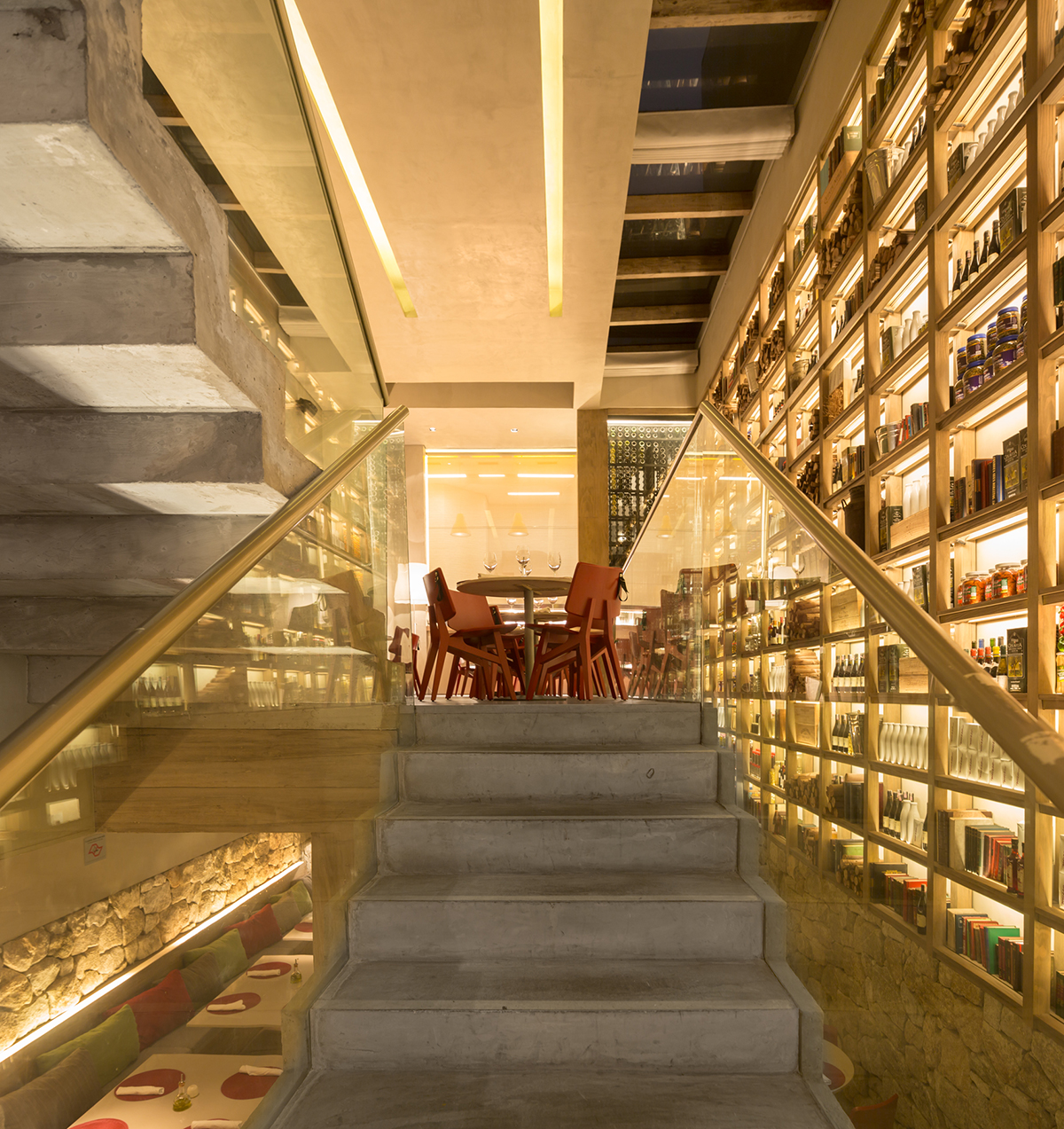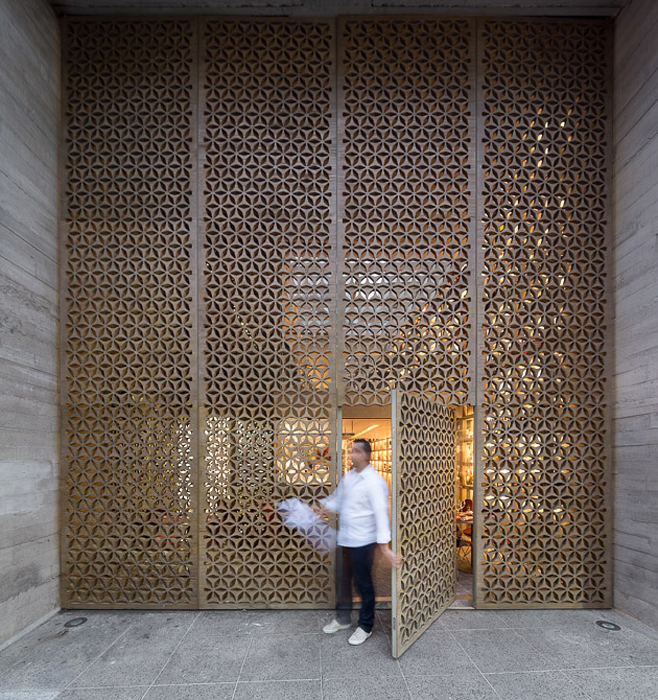Sao Paulo’s Mozza: An Italian Jewel on a Brazilian Boulevard
/Mozza, on the Brazilian street Oscar Freire in Sao Paulo, is designed by acclaimed Brazilian architect Arthur Casas. the restaurant modernizes rustically traditional Italian cuisine while using characteristically Mediterranean elements to infuse character and atmosphere into a unique design the includes mezzanines, a bistro arrangement, and a grand facade.
Mozza showcases a montage of Italian influences that are combined into a relaxed arrangement that reflects both the preparations and presentation of the cuisine on the menu. Even the name, “Mozza,” is a relaxed abbreviation of the delicacy which figures prominently into a variety of the bar’s dishes: Mozzarella di Buffalo, which is appreciated in the Aegean for its texture and tactility. The design blossoms from Italian tradition in both cuisine and hearth, for the Mozzarella di Buffalo is a traditional ingredient of great versatility, while back-lit bookshelves lining the interior are equipped with logs and recipe books, cementing the air of culturally-defined atmosphere in both architecture and cuisine.
The dining area is a bistro setting: painted wooden chairs, wire frame stools, stationary tables; and the wall-mounted green board upon which quotes, ingredients, etc. may be written increases the relaxed feel appropriate to a Mediterranean bistro. Curiously, though confined indoors, the dining area allows for ample viewing outside, in part because of its elevated mezzanine location, in part because of the perforated bronze facade in which multiple doors and doors-within-doors create a labyrinthine portal through which Mozza is accessed by guests, or appreciated by onlookers.
The basic impression of the design is less Italian villa and more seaside grotto. Masonry aligning the lower sections of the walls fabricate volcanic geometrics, and their light colors compound upon the brightness that permeates the interior; which is embodied by the electronic lights as much as by the wood floors, the tan cushions, and the Italian rojos of the chairs, place settings, and pillows. These reds set off the bright colors by infusing a seductive mediterranean exoticism into the already-inviting spectrum. Firewood and bookshelves are a re-conceptualized application of woodwork to a restaurant, while the woodwork of the floor is inviting too from a rustic perspective, impressing the idea of a mezzanine built upon a natural rocky promontory, stairways navigating its many levels. And of course mezzanines are an essential aspect of Casas’ design, with the central dining area lying directly above a bar that features a tailored cocktail menu manufactured by the skilled palette of award-winning grand bar-master Rafael Pizanti. Above the bar (thus below the dining area) fine crafted rafters are as much a viewing pleasure as an evocation of an Italian wine cellar.
Mozza might be configured as a relaxed bistro, but those wine glasses on the tables highlight the fine culinary backbone of the restaurant and put it a step above other establishments that utilize the same bistro setting. The menu embodies versatility; the mozzarella may in one dish be the staple and main feature, in another the spice added to a calzone or an antipasti. Cheeses figure prominently in both starters and entrees. The menu is the child of the renowned Salvatore Loi and Barros, from which a track record of awards and fine restaurants extends. Books on Italian gastronomy line the shelves throughout Mozza, truly unifying the gastronomical and architectural by allowing the one to reflect and flow from the other, and vice versa.
Casas harmonizes the Italian influences and projects them into a distinctly modern rendering of Mediterranean character and culinary excellence. Backed by a cocktail list for the ages, backed by world renowned chefs, backed by its very architecture–and indeed, fronted by a gloriously emblazoned facade–Mozza is an Italian jewel on a Brazilian boulevard.
Photography by Fernando Guerra FG+SG
